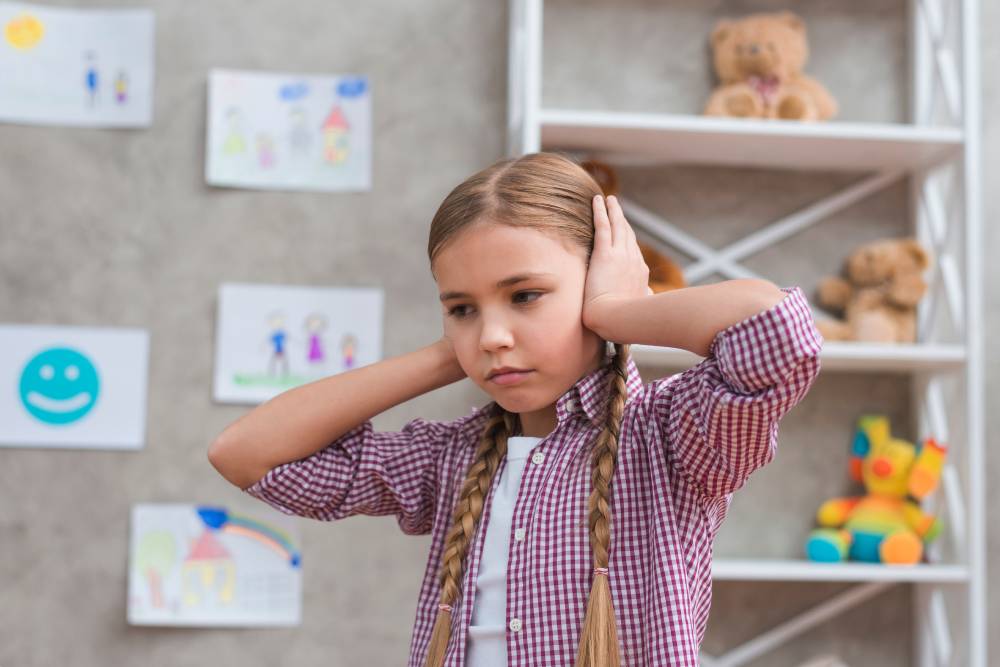Emotional regulation skills in children are essential for managing feelings, reacting calmly, and interacting with others. For children with Autism and ADHD, developing these skills can be a challenge. However, therapy for emotional regulation offers effective strategies to help them manage emotions and thrive.
Understanding Emotional Regulation
Emotional regulation means understanding, expressing, and controlling emotions in a healthy way. Children with Autism and ADHD often face difficulties in this area. They might feel overwhelmed or struggle to calm down when upset. This can lead to challenges in school, home, or social settings.
Therapists focus on identifying triggers, building coping strategies, and teaching children how to respond better in stressful situations. These techniques are key to helping children with Autism and ADHD build emotional regulation skills.
Why Emotional Regulation is Crucial for Children
Strong emotional regulation skills in children improve relationships, learning, and independence. For children with Autism or ADHD, these skills are even more critical. Without emotional regulation, they may struggle with:
- Managing outbursts or frustration
- Understanding their own feelings
- Responding to others calmly
- Staying focused on tasks
By addressing these challenges through therapy, children can develop greater self-awareness and control.
Effective Approaches to Enhancing Emotional Regulation Skills
- Identifying Emotional Triggers
The first crucial step in therapy for emotional regulation is recognizing what triggers strong emotions. Children with Autism and ADHD may react to sensory stimuli, sudden changes, or social misunderstandings. By working closely with therapists, children can identify these triggers and gain deeper insight into their emotional responses. Once understood, they can then develop personalized strategies to handle these situations more calmly and effectively. - Teaching Relaxation Techniques
Relaxation techniques play a vital role in developing emotional regulation skills in children. Simple activities like deep breathing, counting, or using a sensory tool can significantly help. For example, teaching a child to take slow breaths when upset enables them to regain calmness quickly. Repeating these techniques during therapy reinforces their ability to self-regulate over time. - Building Routine and Predictability
Children with Autism and ADHD generally thrive in structured environments. Having a predictable routine minimizes anxiety and emotional overwhelm. Therapists often encourage families to create consistent schedules, ensuring children know what to expect. Consequently, this sense of security reduces emotional outbursts, making it easier for children to regulate their emotions effectively. - Practicing Social Skills
Social situations often present challenges for children with Autism or ADHD. Misunderstandings or difficulties in communication may trigger frustration or withdrawal. Therefore, therapy sessions may include role-playing or guided interactions to practice patience, turn-taking, and expressing feelings appropriately. Over time, these interactions help strengthen emotional regulation skills in children, improving their ability to navigate social environments with ease.
The Role of Parents and Caregivers
Parents play an important role in therapy for emotional regulation. Children need a supportive environment where they feel understood and safe.
Here are ways parents can help:
- Model Calm Responses: Show children how to stay calm during stressful moments.
- Offer Positive Reinforcement: Praise their efforts when they manage emotions well.
- Use Visual Aids: Emotion charts or calming tools can guide children when they feel upset.
When parents and therapists work together, children make faster progress in emotional regulation.


Positive Outcomes of Emotional Regulation Therapy
- Improved Behavior at Home and School
Children with strong emotional regulation skills behave more calmly and consistently. They can complete tasks with much less frustration, allowing them to enjoy learning and playtime. Furthermore, these skills lead to smoother interactions with family members and teachers, creating a harmonious environment. - Better Social Interactions
Therapy for emotional regulation significantly helps children express themselves more clearly and effectively. As a result, they develop better friendships, which, in turn, reduces misunderstandings and conflicts. Additionally, improved emotional control enables children to navigate group settings with greater ease and confidence. - Greater Independence
As children gradually develop these essential skills, they rely much less on others to help calm them during challenging moments. Consequently, they feel more confident and capable of handling difficulties independently. Over time, this newfound autonomy positively impacts their overall self-esteem and resilience.
How Occupational Therapy Supports Emotional Regulation
Occupational therapy plays a significant role in building emotional regulation skills in children. Therapists use sensory integration techniques to help children manage overwhelming stimuli.
For example, children might use weighted blankets, fidget tools, or calming swings to balance sensory input. These tools reduce anxiety and promote emotional stability.
Occupational therapy also includes mindfulness exercises, movement-based activities, and emotion-identification games. All these help children gain control over their emotions effectively.
Creating a Safe Environment for Growth
A supportive environment is essential for developing emotional regulation skills in children. Schools, homes, and therapy centers must work together to create this environment.
In Schools: Teachers can use calming corners, visual cues, or scheduled sensory breaks to support regulation. This helps children stay focused and reduces emotional overwhelm.
At Home: Parents can maintain open communication and avoid harsh reactions to emotional outbursts. Instead, responding with understanding and patience encourages positive emotional development.
In Therapy: Therapists focus on reinforcing positive behaviors and providing tools for independent regulation. These strategies help children manage their emotions effectively in different settings. By combining these efforts, a comprehensive support system fosters emotional growth.
Conclusion
Therapy for emotional regulation undoubtedly transforms the lives of children with Autism and ADHD. By actively teaching coping strategies, steadily improving self-awareness, and consistently building emotional regulation skills, therapists effectively empower children to thrive in various aspects of their lives.
Moreover, with the combined efforts of parents, teachers, and therapists, children can gradually achieve emotional balance, significantly improve their relationships, and confidently lead fulfilling lives. Building emotional regulation skills is undeniably a journey, but with continuous support, unwavering encouragement, and appropriate guidance, every child can successfully overcome challenges and succeed in their unique way.
